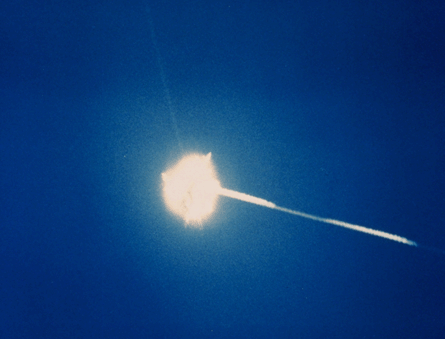Lockheed Martin has proposed a $137 million plan to develop and integrate an air-launched version of the MIM-104 Patriot advanced capability-3 (PAC-3) missile on the US Air Force's Boeing F-15C fighter fleet. The plan could come to fruition within 29 to 33 months.
The US Missile Defense Agency (MDA) began funding an air-launched PAC-3 development in 2007 to prosecute ballistic missiles in their boost and terminal phases, although the interceptor could also be capable of shooting down cruise missiles.
The MDA is reportedly facing a nearly $2 billion budget cut next year, and boost phase programmes could be a particular target.
However, Lockheed believes another US military sponsor would step forward to complete the process of developing and integrating the new version of PAC-3. Glenn Haskins, Lockheed's programme manager for the air-launched hit-to-kill (ALHTK) programme, confirms the company is in discussions with USAF headquarters staff to obtain funding support.
Lockheed has demonstrated the missile's capability to the US Northern Command using a live, flying F-15C and a simulated missile launch and successful intercept, says Haskins, speaking on the sidelines of a missile defence forum sponsored by the Marshall Institute.
 |
|---|
© Lockheed Martin |
Haskins says the concept also has the support of the 13th Air Force, which is part of US Pacific Command.
The air-launched PAC-3 is identical to the ground-launched version except for differences in software. The major change is the missile is dropped from a canister loaded on to the F-15C's pylon for fuel tanks, with this opening after release and launching the weapon against its target.
Although the 5.2m (17ft)-long PAC-3 is a large missile, its integration aboard the F-15C is not dissimilar to Raytheon's 4.1m-long AGM-88 high-speed anti-radiation missile.
Haskins says other programmes have also become interested in the air-launched PAC-3, including the air force's Lockheed F-22 fighter and the US Navy's Boeing P-8A Poseidon maritime patrol aircraft.
If the USAF moves forward with the programme, integrating the PAC-3 will require upgrading the F-15C with an infrared search and track (IRST) system. This would be needed for tracking targets at exo-atmospheric altitude, Haskins says, adding that the service is likely to add an IRST pod to the F-15C fleet for other reasons.
The Singapore air force's F-15SG is equipped with an IRST, but the MDA has also awarded Lockheed a contract to develop a similar system for its ALHTK programme.
Source: Flight International



















